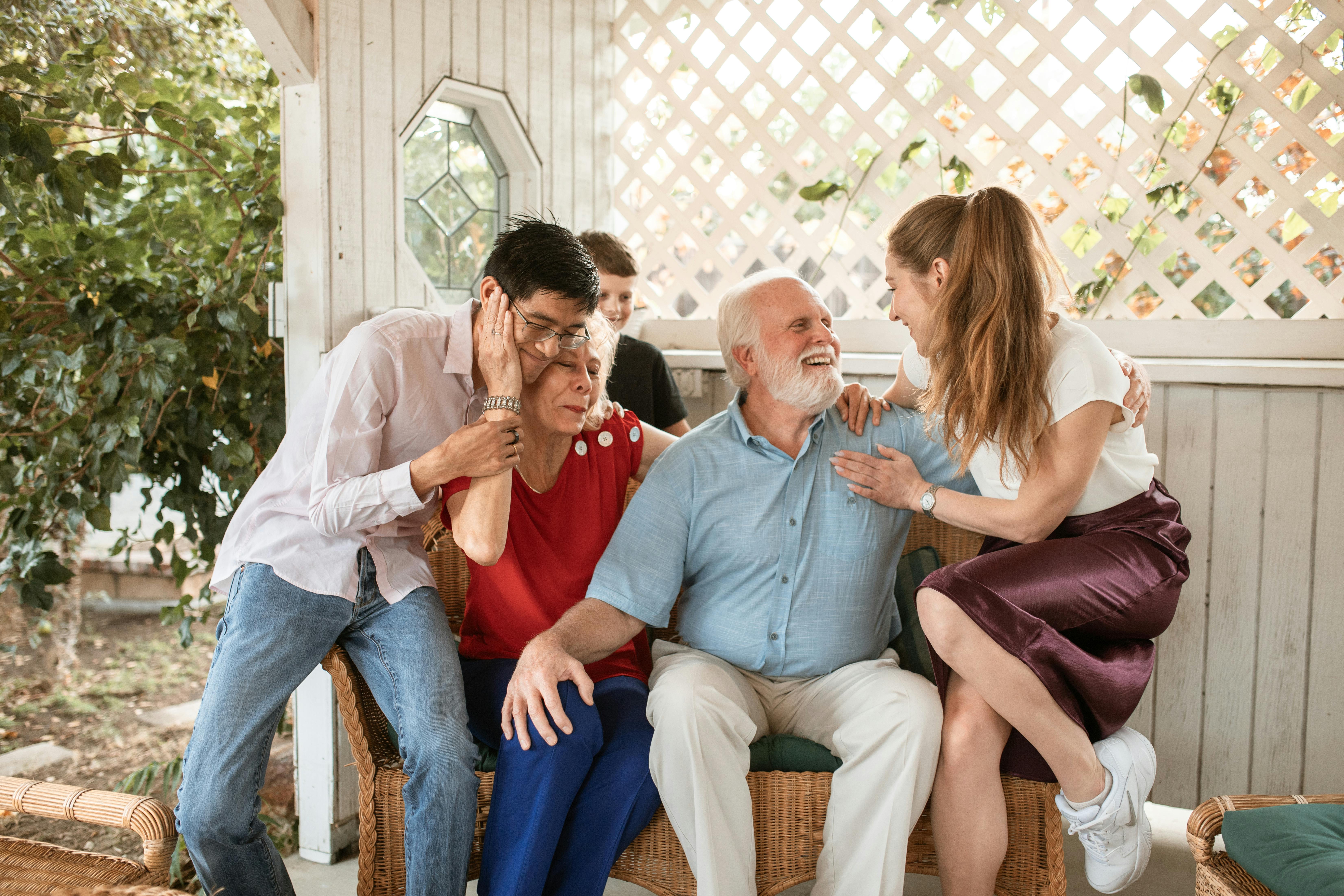What is?
The goal of speech therapy is to improve all aspects of communication. This includes: understanding, expression, sound production, and social use of language (1). Speech therapy may include sign language and the use of picture symbols (two). At best, a specific speech therapy program is tailored to each child’s specific weaknesses (1). Unfortunately, it can be difficult to create a child-specific, long-term speech therapy plan (1, 3).
The National Research Council outlines four aspects of beneficial speech therapy:
(1) Speech therapy should begin early in the child’s life and be frequent.
(2) Therapy should be based on practical experience in the child’s life.
(3) Therapy should encourage spontaneous communication.
(4) Any communication skills learned during speech therapy must be generalizable to multiple situations (4).
Therefore, any speech therapy program must include practice in many different places with many different people (2). For speech therapy to be most successful, caregivers should practice speech exercises during normal daily routines at home, school, and in the community (1, 5). Speech therapists can give specific examples of how best to incorporate speech therapy throughout a child’s day (6).
What it’s like?
Speech therapy sessions will vary greatly depending on the child. If the child is under three years old, the speech therapist will most likely come to the house for an hour-long session. If the child is older than three years, the therapy session will take place at school or in the therapist’s office. If the child is of school age, expect speech therapy to include one-on-one time with the child, classroom activities, and consultation between the speech therapist, teachers, and parents (2).
Sessions should be designed to engage the child in communication. The therapist will engage the child through games and toys chosen specifically for the child. Several different speech therapy techniques and approaches can be used in a single session or over many sessions (see below).
What is the theory behind this?
Children with autism not only have trouble communicating socially, but often have trouble behaving as well. These behavioral problems are believed to be caused, at least in part, by the frustration associated with the inability to communicate. Speech therapy is intended not only to improve social communication skills, but also to teach the ability to use those communication skills as an alternative to unacceptable behavior (1).
Works?
Many scientific studies show that speech therapy is capable of improving the communication skills of children with autism (1). The most successful approaches to speech therapy include: early identification, family involvement, and individualized treatment (3). There are many different approaches to speech therapy, and most of them are effective. The table below lists some of the different approaches. In most cases, a speech therapist will use a combination of approaches in a program.
Type of speech therapy
Definition
Works?
Augmentative and Alternative Communication (AAC)
broad term for forms of communication that supplement or enhance speech, including electronic devices, picture boards, and sign language
Yes 2)
Discreet trial training
therapy that focuses on behavior and actions
Yes (1)
Communication facilitated
technical communication involving a facilitator placing their hand on the patient’s hand, arm, or wrist, which is placed on a board or keyboard with letters, words, or pictures
Not(1, 3)
Functional Communication Training (FCT)
use of positive reinforcement to motivate the child to communicate
Yes (4)
widespread imitation
the child is encouraged to imitate the therapist’s mouth movements before attempting to make the sound
Yes (5)
hand training
use of notices and reinforcements of independent requests of elements (called commands)
Yes (6)
motivation techniques
therapy techniques that focus on following the child’s lead and capitalizing on the child’s desire to respond
Yes (7)
Peer mentors/circle of friends
use of children who are trained to interact with the autistic child throughout the day
Yes (8)
Picture Exchange Communication System
method of using picture symbols to communicate
Yes (9)
relationship development intervention
proprietary treatment program that focuses on the belief that people with autism can engage in authentic emotional relationships if exposed to them gradually and systematically
Yes (8)
Sign Language/Total Communication
language of hand shapes, movements, and facial expressions (especially useful for ages 0-3)
Yes (1)
Story Scripts/Social Stories
true stories that can be used or adapted to teach social skills
Yes (1, 8)
Is it harmful?
There are no reports that speech therapy is harmful.
cost
The cost of speech therapy is covered by the government through the Individuals with Disabilities Education Act (IDEA). The amount of speech therapy provided in this setting may be suboptimal and therefore needs to be supplemented by private therapy. Private speech therapy can be expensive (approximately $100 per hour)
Speech therapy requires investment of time on the part of the parents. To be most effective, parents must be fully integrated into the therapy program and seek opportunities to practice communication throughout the daily routine. Over time, this should become a new way of life.
Means
Autism is a condition covered by the Individuals with Disabilities Education Act (IDEA). Services covered by IDEA include early identification and evaluation and speech-language pathology (speech therapy). This law protects the rights of patients with autism and provides guidelines to assist in their education. Covers children from birth to age 21 (US Department of Education website). Pediatricians can provide contact information for the state’s early intervention program (for children ages 0-3). School districts will coordinate special services for children ages 3-21.
Parents of nonverbal children should consider incorporating PECS.
Signing Times is one of many companies that sell systems that help teach children sign language.
American Speech-Language-Hearing Association. (2006). Principles for speech-language pathologists in the diagnosis, evaluation, and treatment of autism spectrum disorders throughout the lifespan: Technical report.
Charman T, Stone W. Social and communication development in autism spectrum disorders: early identification, diagnosis and intervention. New York, The Guilford Press, 2006, p. 115-266.
PaulR, SutherlandD. Early language improvement in children with autism spectrum disorders. In Volkmar FR, Paul R, Klin A, et al. Handbook of Autism and Pervasive Developmental Disorders, Third Edition, Volume Two. Hoboken, John Wiley & Sons, 2005, pp. 977-1002.
References
1. Goldstein, H. 2002. “Communication Intervention for Children with Autism: A Review of Treatment Efficacy.” Journal of Autism and Developmental Disorders v32 n5 p373-96 Oct 2002.
2. Diehl, SF 2003. “The Role of the SLP in Collaborative Assessment and Intervention for Children with ASD.” Topics in Language Disorders v23 n2 p95-115 April-June 2003.
3. Lord, C. 2000. “Review: Achievements and Future Directions for Intervention Research in Communication and Autism Spectrum Disorders.” J. Autism Dev. Disord. 30(5):393-398.
4. Committee on Educational Interventions for Children with Autism, CLaJPME2001. “Educating children with autism”. Committee on Educational Interventions for Children with Autism, CLaJPME The National Academies Press.
Reference type: Book, whole
5. Koegel, LK 2000. “Interventions to facilitate communication in autism.” J. Autism Dev. Disord. 30(5):383-391.
6. Safran, SP, et al. 2003. “ABC Intervention for Children with Asperger Syndrome.” Topics in Language Disorders v23 n2 p154-65 April-June 2003.
7. Light, JC, et al. 1998. “Augmentative and alternative communication to support receptive and expressive communication for people with autism.” J.Common.Disord. 31(2):153-178.
8. Keen, D., et al. 2001. “Substituting prelinguistic behaviors for functional communication.” J. Autism Dev. Disord. 31(4):385-398.
9. Ross, DE, and RD Greer. 2003. “Generalized imitation and command: inducing early speech events in young children with autism.” Res.Dev.Disabil. 24(1):58-74.
© 2007 Healing Thresholds
Healing Thresholds Inc. authorizes you to view or download material on the Healing Thresholds site if you include the following copyright notice: “Copyright © 2007, Healing Thresholds, Inc. All rights reserved”




